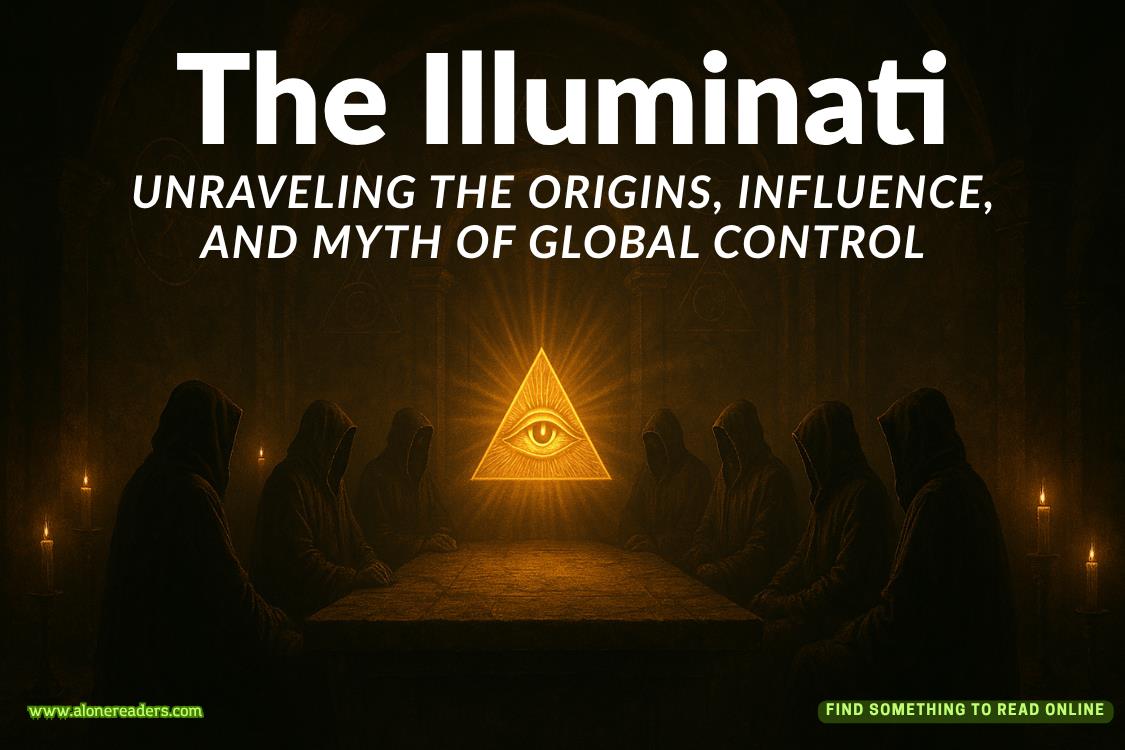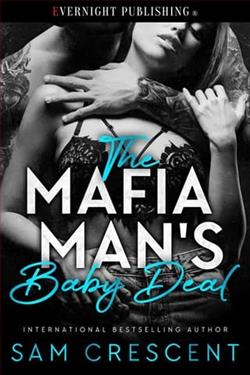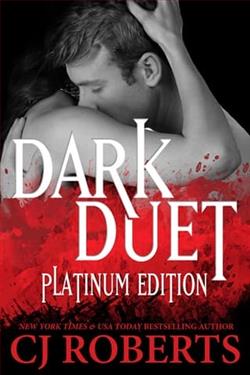Page 50 of Find Me
Lindsay clicked out of Wikipedia and found a longer article about the still-unsolved murder, aimed at true crime junkies. The article detailed a crowdsourced online theory that Melanie Locke was behind the killing. Some of the amateur sleuths opined that she could have easily left their young daughter asleep at the ranch, followed her husband back to town, committed the murder, and then returned to Flint Hills in time to be interviewed by police. The problem with that theory was that police had called her within twenty minutes of discovering Richard’s body, using a cell phone number they obtained from the next-door neighbor. Cell phone tower data placed Melanie in Flint Hills at the time she answered that call. Based on those records and the daughter’s statement that her mother never left the house that night, police had publicly cleared Melanie of suspicion in an effort to encourage potential witnesses to come forward with any relevant information they mighthave. The most likely explanation, they announced, was that Richard had interrupted an attempt to burglarize the family home while they were away for the weekend.
Despite law enforcement’s insistence that Richard’s wife was not a suspect, speculation persisted. The more nuanced gloss of the Melanie-did-it theory posited that she intentionally left his briefcase behind, knowing that he had an important federal appellate brief due the following week and would need to return to the house to retrieve it. A woman with her resources, intellect, and ambitions, critics maintained, would have no problem finding a skillful contract killer to do her dirty work while she had an ironclad alibi.
As for motive, the armchair, online detectives had no shortage of ideas there, either. Melanie had married Richard at a young age. The couple met at Harvard—she was an undergrad, he was in law school. At the time, Melanie had no intention of working for her father’s company, let alone becoming the corporate heir apparent. The couple’s initial plans were to live and work in Washington, DC, Richard as an elite appellate litigator at one of the capital’s largest law firms, and Melanie as a congressional aide with ambitions to become a behind-the-scenes power broker, perhaps as a lobbyist or campaign manager.
But when her father told her he might have to shutter all his stores and file bankruptcy unless he found a way to go toe-to-toe with the competition, Melanie hit the books, eventually identifying an inconsistency between the consumers of do-it-yourself TV programs (women) and the targeted audience for home improvement marketing (men). After convincing her father that women were the most important and underserved segment of the market, they decided that she should oversee the corporate transformation personally. Richard gave up his partnership at his white-shoe law firm and moved to Wichita, where he was lucky to argue two federal appeals a year, while Melanie went from behind-the-scenes politico to the public face and eventual CEO of one of the largest retailers in the country.
According to a gossipy former friend, it wasn’t only their job titles that changed with the move. Whereas Richard used to pull in more than 80 percent of the household income, his earnings became a mere afterthought given the family largesse. He resented his wife’s success, and she resented the resentment. The same gossipy friend told reporters that Melanie had once mentioned matter-of-factly that it had been years since the couple had sex, leaving the friend to wonder whether Richard had other arrangements. The couple reportedly had no prenuptial agreement, meaning that Richard would own half of everything, including LockeHome, in the event of a divorce—no matter which of them was to blame.
The article went on to outline a conspiracy theory that Melanie not only had her husband killed, but also bribed the police to clear her publicly—a theory seemingly backed by the fact that the lead detective in charge of Richard’s murder investigation was later named chief security officer for LockeHome’s headquarters.
One point that both law enforcement and Melanie’s critics agreed on was that the only thing missing from the house was a silver necklace. After an initial walk-through of the property with police, Melanie concluded that nothing had been stolen. It was the couple’s daughter who corrected the record. She had been snooping around her father’s office in anticipation of her upcoming birthday when she found a small blue gift box in his desk drawer. After her father died, she returned to his desk to claim the necklace he had chosen for her, but it was gone.
The prevailing law enforcement theory was that the burglar or burglars started in Richard’s downstairs office. They would have found both his gun and the jewelry box. When they heard Richard’s car, they ran out the back door, shot Richard in the driveway, and then fled.
Those who were convinced that Melanie was behind the murder saw the necklace as yet another piece of evidence supporting their theory of the crime. They opined that Melanie did in fact know about the necklace in her husband’s desk drawer, because she had found it herself and had concluded that Richard was cheating on her.
Lindsay’s thoughts drifted to an image of Jocelyn Hodge, well past drunk, behind the wheel of her Bronco.The police said they found a woman’s necklace on his boat. I want to think it was for me, but—
Lindsay pulled up Jocelyn’s number on her phone, hit call, and then typed a new search into her laptop: “Richard Mullaney stolen necklace description.”
“Hello?” Jocelyn sounded like she had been sleeping.
Lindsay identified herself. “We spoke earlier at the beach,” she said as a reminder.
“That wasn’t cool, what you did. You knew the police were after your friend, didn’t you?”
“I’m sorry, I can’t talk with you about that. But I just have one question—”
“You’re unbelievable.”
“Please, it’s one small thing.” She clicked on the top search result on-screen. “You said the police found a necklace on Alex’s boat. Did they show it to you? What did it look like?”
“Why does that even matter?”
The blue bar at the top of her browser slowed and then froze. She knew Jocelyn was seconds away from hanging up. The search results finally loaded, and she gave the screen a quick scan:silver chain with a pendant of two hearts.“Was it a heart necklace?” she blurted.
Jocelyn’s voice cracked when she spoke again. “Two. Two little hearts. The two of us. He never had a chance to give it to me.”
30
Tuesday, June 22, 8:05 p.m.
Like most visitors to the southern fork of Long Island, Lindsay had a tendency to clump the entire East End into “the Hamptons.” But to the extent that the Hamptons had become synonymous with glossy magazine images of high-end boutiques, glitzy lawn parties, and celebrity-soaked restaurants, it was defined by pockets of South and East Hampton. With Scott behind the wheel of her car, they were now long past Amagansett, past Napeague Bay, past Hither Hills State Park and the preserves. Though not immune from the onslaught of summer visitors, Montauk had managed to preserve the low-key vibe of an old fishing and surf town.
It had taken Lindsay most of the drive to summarize everything she had learned so far about Alex Lopez and Richard Mullaney. She was impressed at how quickly Scott absorbed the information.
“But isn’t the necklace on Lopez’s boat actually a good thing?” he asked, slowing as he eyed a spot at the curb on the main strip. As usual, he nailed the parallel parking job on the first try. “It makes it look like he killed Mullaney. Not exactly a sympathetic character. Who knows what else he could have been wrapped up in.”
“Except the police obviously think Hope was involved, too. ButNew York prosecutors aren’t going to charge Hope with anything that may have happened in Kansas fifteen years ago. My guess is the Wichita cops are just beginning to reinvestigate that case in light of whatever Decker found this week. We just need something to get the district attorney’s office here to tap the brakes on bringing charges tomorrow.”
She had already told Scott the goal for the evening: find someone—anyone—willing to confirm that they’d seen Alex Lopez or his truck in the last ten days. Hope’s confrontation with Alex had occurred two Saturdays before. She’d tossed the rug at the dump on Sunday morning, which Lindsay had to assume the police knew. By the time the Stansfields returned to their house on Monday, there was no sign of Hope, Alex, or either of their vehicles, and Jocelyn Hodge had found Alex’s truck later the next day. To convict Hope of killing Lopez, the police would need a timeline that accommodated all those facts, which meant Lindsay needed witnesses who might turn their clock upside down.
After two hours of touring Montauk with photos of Hope and Alex, she thought they might finally have a lead when a clerk at the Montauk Corner Store said she remembered Alex showing up a few minutes before the shop opened on a Sunday. He’d tapped on the glass to see if he could come in early to buy a few swimming noodles for his boat. It quickly became clear, however, that the clerk was referring to the Sunday before Alex and Hope both went missing.
Another hour later, they were leaving yet another restaurant empty-handed when Lindsay’s cell phone rang. She felt a rise of resentment at the sight of Carter Decker’s name on the screen. “Did you finally realize what a mistake you made?” If only she had the evidence to back up her bluster. “When can I see my client?”
“Tomorrow morning. Just letting you know that she’s been booked and will be held overnight. We didn’t interrogate her.”















